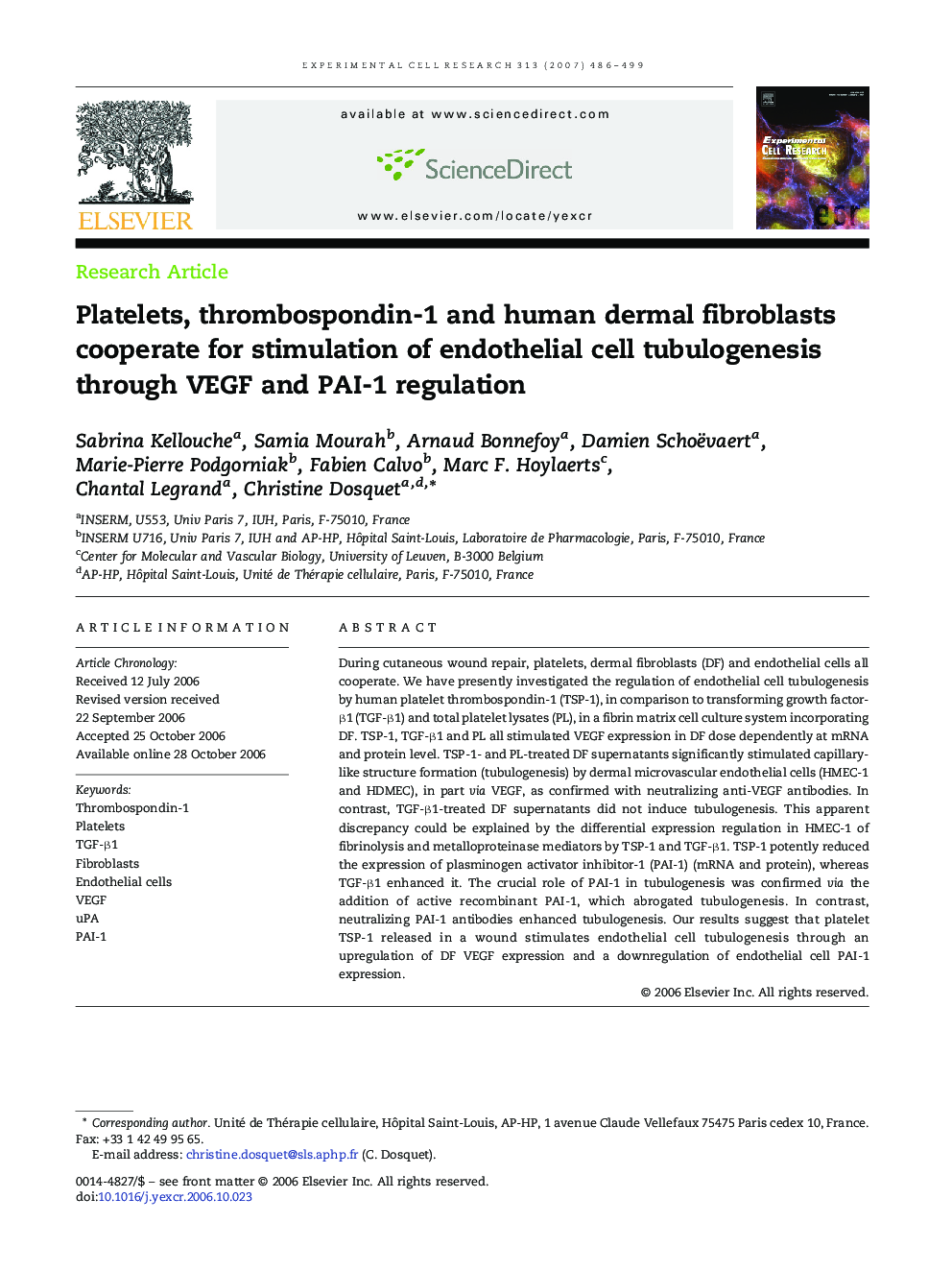| Article ID | Journal | Published Year | Pages | File Type |
|---|---|---|---|---|
| 2132592 | Experimental Cell Research | 2007 | 14 Pages |
During cutaneous wound repair, platelets, dermal fibroblasts (DF) and endothelial cells all cooperate. We have presently investigated the regulation of endothelial cell tubulogenesis by human platelet thrombospondin-1 (TSP-1), in comparison to transforming growth factor-β1 (TGF-β1) and total platelet lysates (PL), in a fibrin matrix cell culture system incorporating DF. TSP-1, TGF-β1 and PL all stimulated VEGF expression in DF dose dependently at mRNA and protein level. TSP-1- and PL-treated DF supernatants significantly stimulated capillary-like structure formation (tubulogenesis) by dermal microvascular endothelial cells (HMEC-1 and HDMEC), in part via VEGF, as confirmed with neutralizing anti-VEGF antibodies. In contrast, TGF-β1-treated DF supernatants did not induce tubulogenesis. This apparent discrepancy could be explained by the differential expression regulation in HMEC-1 of fibrinolysis and metalloproteinase mediators by TSP-1 and TGF-β1. TSP-1 potently reduced the expression of plasminogen activator inhibitor-1 (PAI-1) (mRNA and protein), whereas TGF-β1 enhanced it. The crucial role of PAI-1 in tubulogenesis was confirmed via the addition of active recombinant PAI-1, which abrogated tubulogenesis. In contrast, neutralizing PAI-1 antibodies enhanced tubulogenesis. Our results suggest that platelet TSP-1 released in a wound stimulates endothelial cell tubulogenesis through an upregulation of DF VEGF expression and a downregulation of endothelial cell PAI-1 expression.
